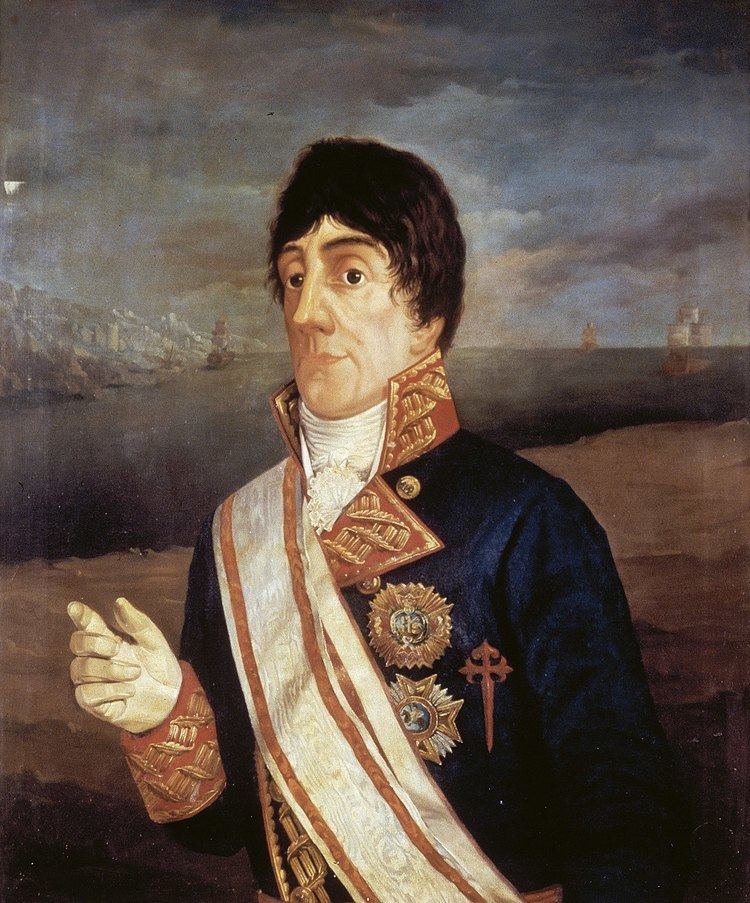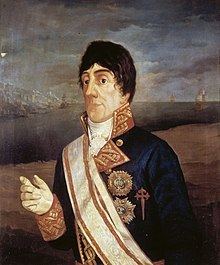Name Jose Bustamante | Role Politician | |
 | ||
Died March 10, 1825, Madrid, Spain | ||
José de Bustamante y Guerra (Corvera de Toranzo, Cantabria 1 April 1759 – Madrid 10 March 1825), sometimes referred to simply as Bustamante, was a Spanish naval officer, explorer, and politician. He was a native of Corvera de Toranzo in Cantabria, Spain.
Contents
Early life

In 1770 Bustamante became a midshipman at the Academy of the Guardiamarinas in Cádiz. At the end of his studies there he embarked on the Santa Inés, bound for the Philippines. But the ship was attacked and captured by a British man-of-war. Bustamante was eventually released and returned to Spain.
Malaspina expedition

In 1788 Bustamante partnered with Alessandro Malaspina. Together they proposed to the Spanish government a grand scientific expedition modeled after the voyages of James Cook. The project was approved and two corvettes were built specifically for the expedition. Bustamante was in command of the Atrevida (meaning "daring" or "bold") while Malaspina commanded the Descubierta ("discovery"). The names were chosen by Malaspina to honor James Cook's Discovery and Resolution. The expedition was under the "dual command" of both Malaspina and Bustamante. Even though in time the expedition became known as the Malaspina's, Bustamante was never considered subordinate. Malaspina insisted on their equality, although Bustamante early acknowledged Malaspina as the "chief of the expedition".
From 1789 to 1794 Bustamante and Malaspina sailed throughout the Pacific Ocean, stopping at nearly all the Spanish colonies and exploring little known areas such as the Pacific Northwest, New Zealand, and Australia. The two ships sometimes separated to pursue different tasks. For example, when sailing from Talcahuano to Valparaíso (in present-day Chile), Bustamante kept to the coast, surveying and mapping, while Malaspina sailed to the Juan Fernández Islands. Between Valparaíso and Callao, Peru, Malaspina again investigated offshore islands while Bustamante continued charting the coast.
Bustamante kept a diary during the Malaspina expedition, which was published in 1868.
Later life
After returning to Spain in 1794 Bustamante continued to work with Malaspina until the latter was imprisoned on charges of plotting against the state. Bustamante remained free of the political troubles of Malaspina.
Bustamante was promoted to navy brigadier shortly after his 1794 return to Spain. In 1796 he was appointed political and military governor of Paraguay and Commander-General of Río de la Plata (Governor of Montevideo). On October 5, 1804, in peace time, while sailing to Spain in command of four frigates Bustamante was attacked and captured by a British squadron without any declaration of war between U.K. and Spain. He was eventually released and faced a Spanish court-martial, but emerged untainted. In 1810 he was appointed Captain General of Guatemala. He remained at that post until 1817.
José de Bustamante y Guerra died in 1825 at the age of 66.
